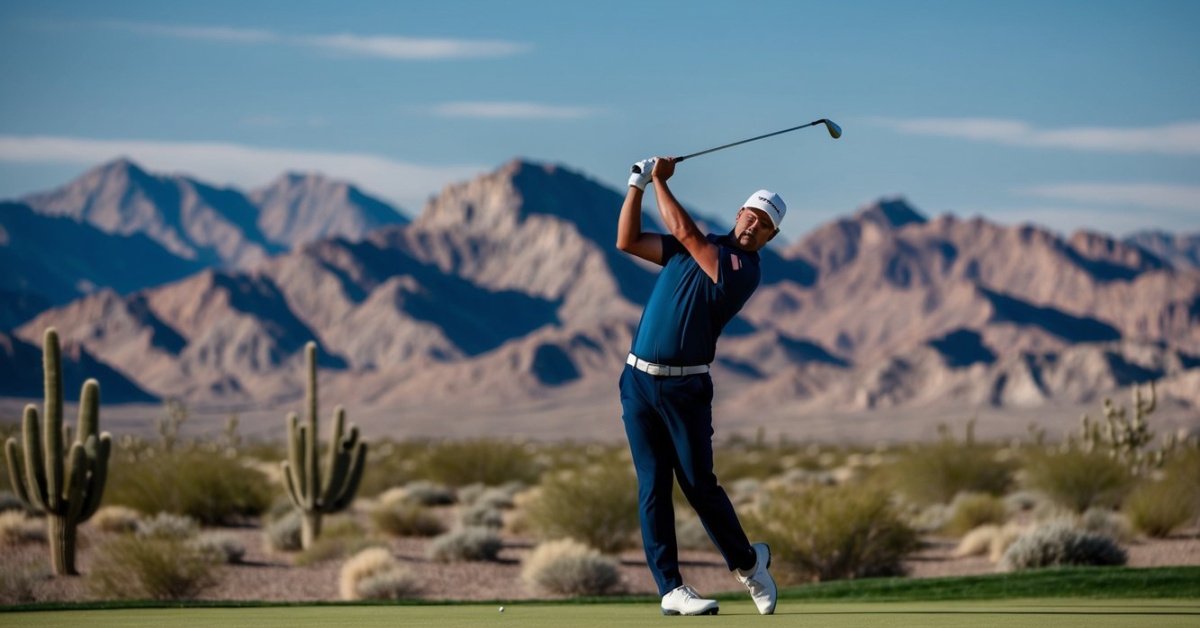Ever wondered why golf balls have those quirky dimples? It’s not just for looks! Those little indentations have a fascinating science behind them that’s crucial to your game.

You might think a golf ball is just a golf ball, but there’s a world of design and engineering that goes into every single one. We’re about to dive into why golf balls are the way they are and how they can make or break your next round on the green.
The Importance of Dimples on Golf Balls
Imagine a golf ball without dimples; it flies through the air with unpredictable turbulence. Dimples are engineered indentations that revolutionize your game by manipulating the air around the ball. Aerodynamics is the secret sauce behind these tiny concave shapes. They reduce air resistance, allowing the ball to fly farther and straighter than it would if the surface were smooth.
As you stand on the tee, ball in position, consider how those dimples will influence your shot. They create a thin layer of air that clings to the ball’s surface, reducing the wake—a high-pressure turbulent area behind the moving ball—and in turn, diminishing drag. This is known as the boundary layer effect, which translates to longer drives and that satisfying sensation of watching your ball soar through the fairway.
Each brand designs its dimples differently—there’s no one-size-fits-all. Some golf balls may have more than 300 dimples while others may have fewer, and their depths and patterns vary too. Perfecting your game means knowing how these variations can affect ball flight under different conditions. On a calm day, a ball with more dimples may perform better, while on a windy day, the pattern could be more important than the number.
Here’s some data on varying dimple designs and how they might impact your game:
| Dimple Design | Average Distance Increase | Flight Stability Rating |
|---|---|---|
| High Dimple Count | 5% | 8/10 |
| Optimized Dimple Pattern | 10% | 9/10 |
| Reduced Dimple Depth | 3% | 7/10 |
Remember, it’s not just about power. Precision is key and understanding the science behind the humble dimple could be the edge you need. On your next round, take a closer look at your golf ball. Notice its unique dimple pattern and think about the unseen forces helping to refine your shots as you play. Every dimple works in your favor, so make the most of this engineering marvel.
The Science Behind Golf Ball Design
When you’re lining up for that crucial tee shot, it’s not just your swing that matters—it’s the science encapsulated in that little white ball resting on the tee. Golf ball design is a sophisticated blend of physics, engineering, and a touch of alchemy. Ever wonder why hitting a modern golf ball feels so satisfying? That’s the result of painstaking research and development.
Dimples are the most visually distinctive feature of a golf ball, and they’re critical in governing how the ball behaves in flight. Physics tells us that a smooth ball hit with a golf club would travel half as far as a ball with dimples. This is because dimples create a thin turbulent boundary layer of air that clings to the ball’s surface. This allows the smooth flow of air to detach later from the surface, decreasing the wake—essentially, the air pocket trailing the ball—and reducing drag.
« What Are the Numbers on a Golf Ball? Unlock Their Secret Meanings
What Happens If Golf Ball Is Stuck in Tree? Your Clever Strategy Guide »
Manufacturers continuously experiment with dimple patterns to optimize performance. The basic pattern may look uniform, but slight variations in depth and symmetry can influence the stability and distance a ball can achieve. Case in point, balls with more dimples can have increased lift, impacting how high and far they fly.
Materials and Construction
Besides the dimples, the materials used in a golf ball significantly affect its behavior. The core of the ball was once simple rubber, but now it’s often a complex composite that can include materials like tungsten or titanium. The core is engineered to maximize energy transfer from your club’s swing to the ball’s flight.
The cover, typically made of urethane or Surlyn, also plays a significant role. Urethane covers allow for greater feel and spin control, particularly important in short game shots, while Surlyn covers are harder and lead to longer drives.
Let’s break down the three main types of golf balls:
- Two-piece: Durable and designed for distance, ideal for beginners and high-handicappers.
- Three-piece: Offer more spin and control, suited for intermediate players.
- Multi-layer: Target the low-handicappers seeking peak performance in both distance and finesse.
You wouldn’t pick a club without careful consideration, so give your golf ball the same thoughtful choice. It’s not just about the shiny exterior; it’s the science inside that molds your game.
How Golf Ball Construction Affects Performance
Driving it straight down the fairway, chipping delicately onto the green, or putting with finesse — your golf ball’s construction is pivotal in every stroke you make. As a serious player with a low handicap, you’re not just choosing a ball, you’re choosing a technical ally in your continuous pursuit of excellence.
Golf balls aren’t just white spheres — they’re marvels of engineering. Each layer, from the core to the cover, is meticulously crafted to influence how the ball behaves upon impact. The heart of your golf ball, the core, typically consists of a synthetic rubber compound which contributes to the compression of the ball. High-compression balls, favored by players like you with a faster swing speed, offer better control and are less responsive to unintended spin during a long drive.
Surrounding the core you’ll find additional layers called the mantle which further modify the energy transfer from your club to the ball. A multi-layer ball, generally featuring two or three layers, impacts spin separation. This means you can achieve a lower spin off the tee, leading to increased distance, while still maintaining good spin rates on shots to the green for that necessary stopping power.
The cover of the golf ball, often made from urethane or Surlyn, completes this package of performance. Urethane covers are typically associated with a softer feel and higher spin rates, perfect for pinpoint accuracy during your approach shots. Conversely, balls with Surlyn covers tend to be more durable and provide a lower spin rate, which can help reduce hooks or slices off the tee.
Dimple pattern and design also influence the aerodynamics. While the interior design of the ball dictates its potential, the dimples unlock that potential by affecting the airflow around the ball while it’s in flight. You’ll notice how a ball with a higher number of shallower dimples tends to have a higher trajectory, essential for clearing obstacles, while others opt for deeper dimples to achieve a penetrating ball flight beneficial in windy conditions.
Factors to Consider When Choosing a Golf Ball
As you refine your game, you know selecting the right golf ball is just as crucial as the right club. The ball you choose can have significant effects on your overall performance. Let’s dive into the factors that’ll help you find the ideal match for your low handicap game.
Swing Speed
First up is swing speed. It’s a critical factor golfers often overlook. If your swing is fast, typically above 105 mph, you’d benefit from high-compression golf balls that cater to your power. These balls convert your high swing energy into maximum distance. On the other hand, if your swing’s on the slower side, a low-compression ball can improve your distance by creating more deformation and thus, more kinetic energy at impact.
Feel and Control
You’re also going to want to think about feel and control. If finesse shots around the green are your bread and butter, a softer golf ball is usually your best bet. Softer balls give that extra control and are responsive to subtle hand movements, which is essential for accurately placing approach shots or when maneuvering the mazes of a challenging green.
Durability and Price
Weigh up durability and price. Remember that premium balls with urethane covers might give the best performance, but they can take a hit on your wallet and might not last as many rounds as you’d like. If you’re playing lots of golf or tend to lose a few balls to the hazards, considering a more budget-friendly option or a ball that balances performance with durability might be the smart move.
Conditions
Lastly, take into account the playing conditions. If you’re often out in the wind, a ball designed for lower flight can help maintain control over your trajectory. In wet conditions, a ball with higher spin might help cut through the moisture and stick to the greens better.
Remember, there’s no one-size-fits-all solution. You may need to experiment to see how different balls perform under the unique conditions of your game. Your perfect golf ball should complement your playing style, the courses you frequent, and the existing components of your game.
Conclusion
Frequently Asked Questions
How does swing speed impact the choice of a golf ball?
Swing speed is crucial because it affects the compression and performance of the ball. Golfers with higher swing speeds typically benefit from higher compression balls, while those with slower speeds may prefer lower compression options for better distance.
Why is feel and control important in choosing a golf ball?
Feel and control are important for shot precision and handling on the greens. A ball that provides a good feel can enhance a player’s short game by providing more control during putting and chipping.
How do durability and price factor into selecting a golf ball?
Durability ensures that the golf ball can withstand multiple rounds without significant wear, making it a cost-effective choice. Price is also a factor as golfers need to balance their budget with the quality and performance they desire from a golf ball.
Can playing conditions affect golf ball selection?
Yes, playing conditions like wind, wet ground, and temperature can affect a golf ball’s performance. Golfers should consider these conditions when choosing a ball to ensure optimal playability.
Is there a universal golf ball that works for every player?
No, there is no one-size-fits-all golf ball. Golfers have unique styles and preferences, requiring experimentation with different types of balls to find the one that best suits their game.










